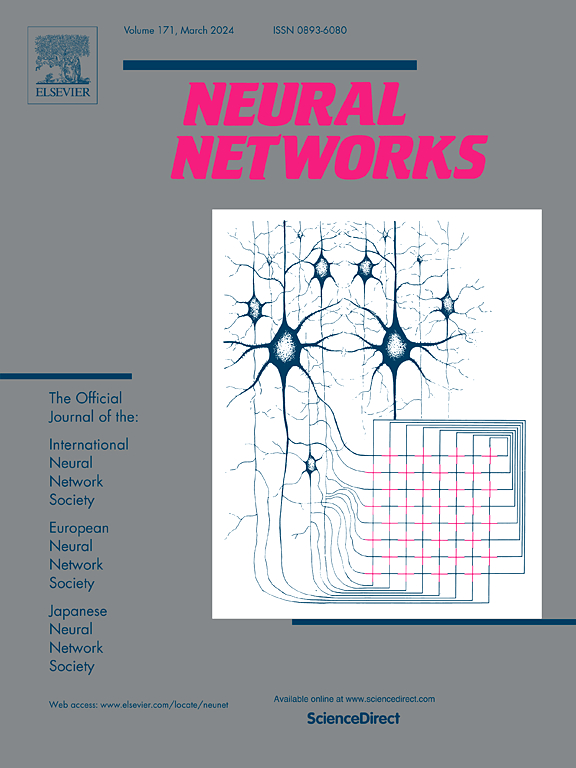Fuzzy spatiotemporal event-triggered control for the synchronization of IT2 T–S fuzzy CVRDNNs with mini-batch machine learning supervision
IF 6
1区 计算机科学
Q1 COMPUTER SCIENCE, ARTIFICIAL INTELLIGENCE
引用次数: 0
Abstract
This paper is centered on the development of a fuzzy memory-based spatiotemporal event-triggered mechanism (FMSETM) for the synchronization of the drive-response interval type-2 (IT2) Takagi–Sugeno (T–S) fuzzy complex-valued reaction–diffusion neural networks (CVRDNNs). CVRDNNs have a higher processing capability and can perform better than multilayered real-valued RDNNs. Firstly, a general IT2 T–S fuzzy neural network model is constructed by considering complex-valued parameters and the reaction–diffusion terms. Secondly, a mini-batch semi-stochastic machine learning technique is proposed to optimize the maximum sampling period in an FMSETM. Furthermore, by constructing an asymmetric Lyapunov functional (LF) dependent on the membership function (MF), certain symmetric and positive-definite constraints of matrices are removed. The synchronization criteria are derived via linear matrix inequalities (LMIs) for the IT2 T–S fuzzy CVRDNNs. Finally, two numerical examples are utilized to corroborate the feasibility of the developed approach. From the simulation results, it can be seen that introducing machine learning techniques into the synchronization problem of CVRDNNs can improve the efficiency of convergence.
求助全文
约1分钟内获得全文
求助全文
来源期刊

Neural Networks
工程技术-计算机:人工智能
CiteScore
13.90
自引率
7.70%
发文量
425
审稿时长
67 days
期刊介绍:
Neural Networks is a platform that aims to foster an international community of scholars and practitioners interested in neural networks, deep learning, and other approaches to artificial intelligence and machine learning. Our journal invites submissions covering various aspects of neural networks research, from computational neuroscience and cognitive modeling to mathematical analyses and engineering applications. By providing a forum for interdisciplinary discussions between biology and technology, we aim to encourage the development of biologically-inspired artificial intelligence.
 求助内容:
求助内容: 应助结果提醒方式:
应助结果提醒方式:


